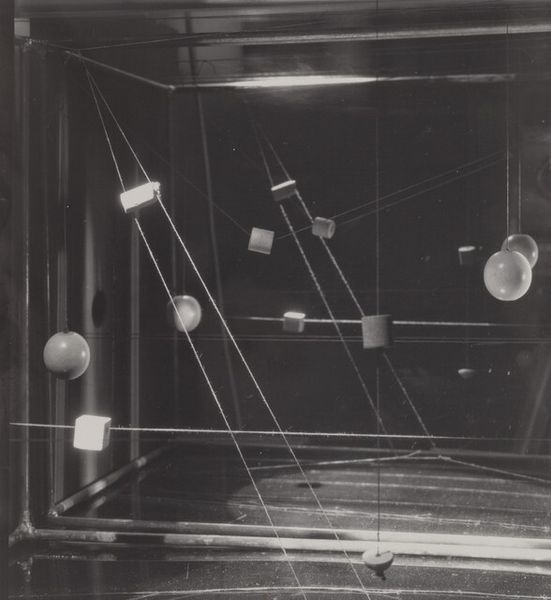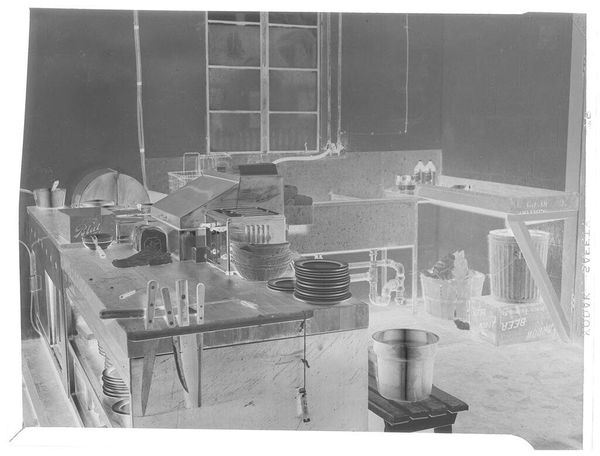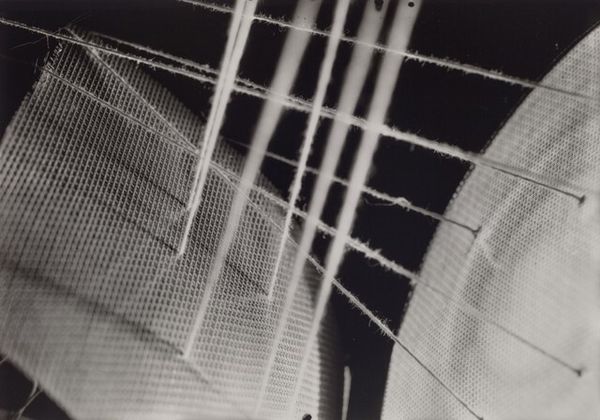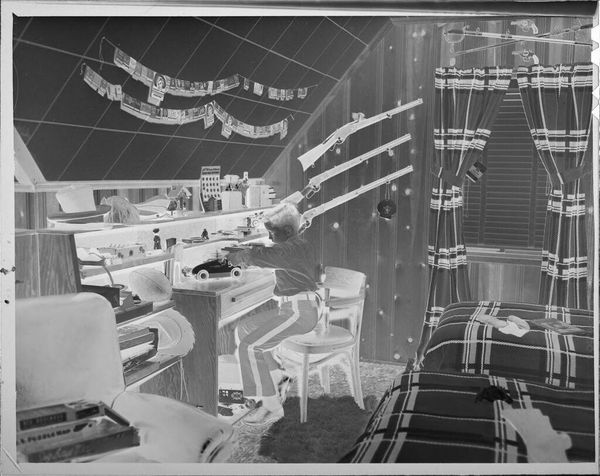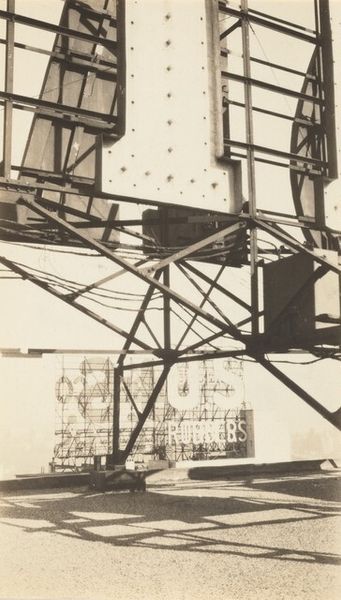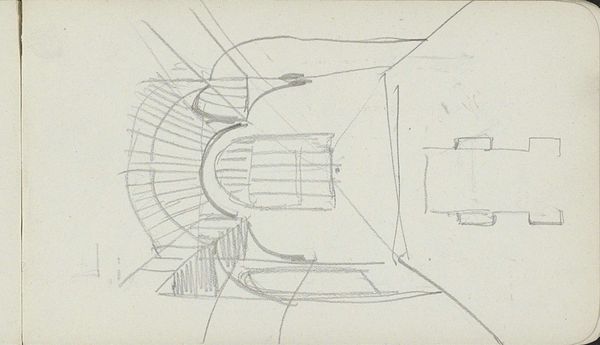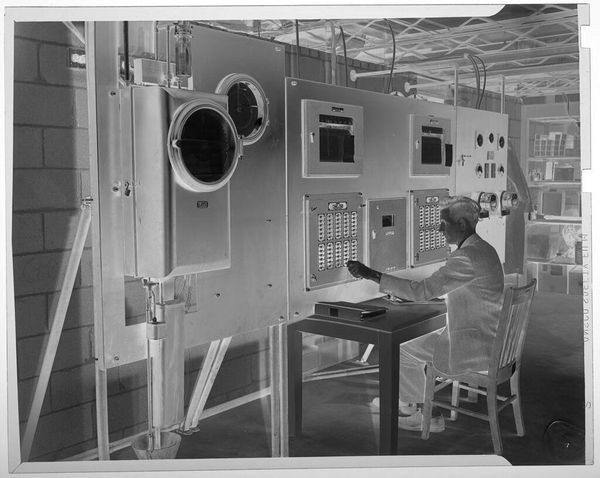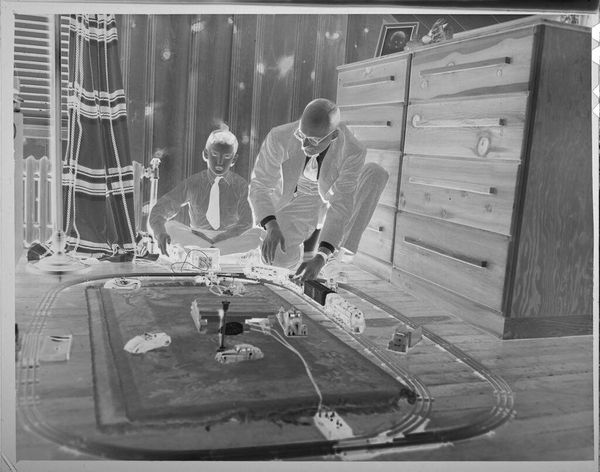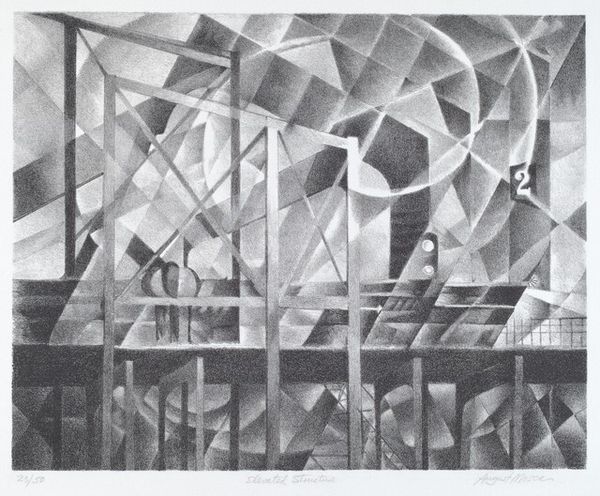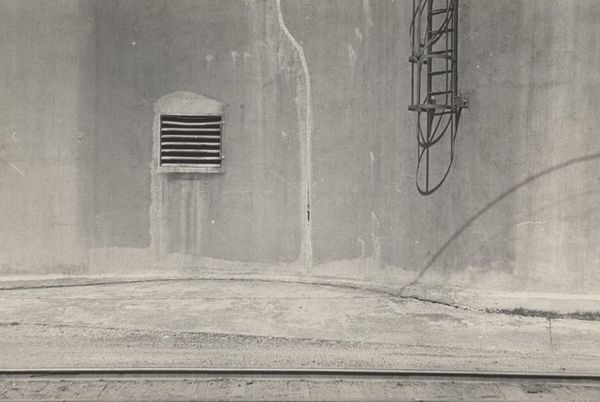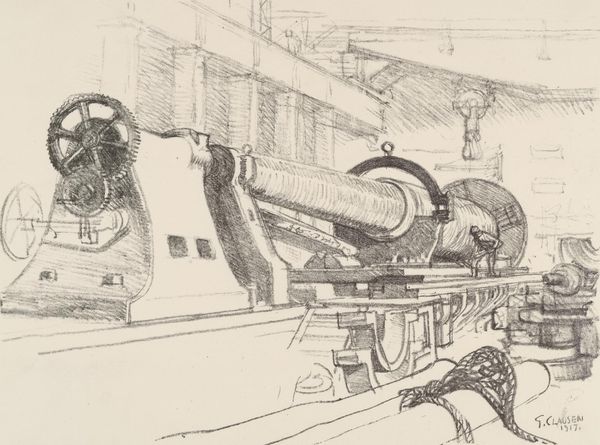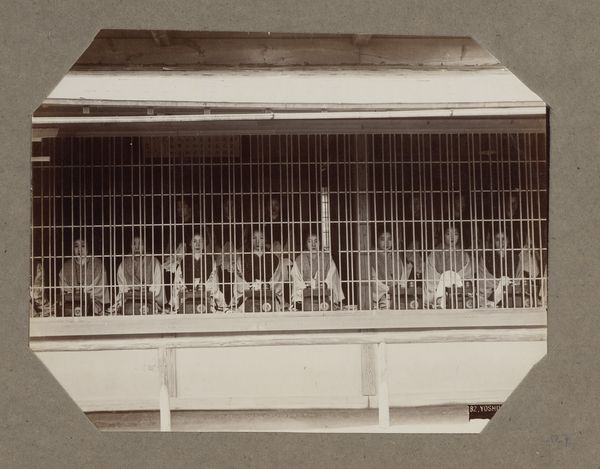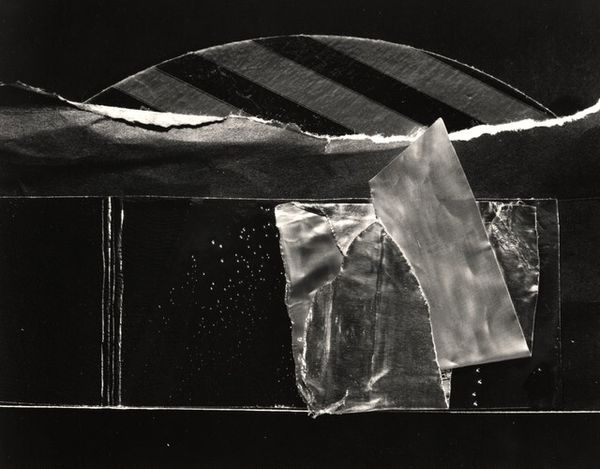
Dimensions: image: 25.6 × 25.1 cm (10 1/16 × 9 7/8 in.) sheet: 35.4 × 27.7 cm (13 15/16 × 10 7/8 in.)
Copyright: National Gallery of Art: CC0 1.0
Curator: Immediately striking is the photographic composition—a very graphic, black and white tonality. It feels so staged, almost constructed. Editor: Precisely. This is a photograph titled, "Roy Lichtenstein", from 1986, and in it we see the artist at work on a large canvas, standing on a large ladder. Lichtenstein’s pop-art aesthetic is evident throughout the artwork behind him. Curator: He seems to be touching up or completing sections of what appears to be an interior scene. The interior motifs and comic style immediately align it with a kind of cultural meme. The dots, the sharp lines... these reference our popular visual language of comics. Editor: The stylized rendering of everyday objects speaks to something deeper. It makes us rethink the iconographic presence of something as simple as a fruit bowl, elevating popular visual shorthand to the realm of high art. It's that translation that makes it so striking. Curator: In my mind it suggests something about American life, perhaps an ironization of mass consumerism, or mass production. The visual language flattens affect while also presenting it for review. Editor: And Lichtenstein, through this graphic image, explores this very interplay—this push and pull between high art and mass culture through the artistic gestures of line, texture and monochrome tonalities. It's deceptively simple, as is so much pop-art. The flatness is key. The abstraction from reality removes depth, both physical and emotional. Curator: True, yet these comic motifs elicit an immediate nostalgic response. We instantly associate these Ben-Day dots and strong lines with comics and inexpensive printmaking, invoking memories of childhood, innocence, and unbridled imagination. It all points to America, yet there's little actually there. The photo becomes a statement in and of itself. Editor: In that way it's become an evocative icon of Pop-Art itself. Seeing the man on the ladder further reminds me of the constructedness of even this form. It creates a moment that causes reflection about its creation. Curator: Well said! The convergence of mass media icons and our memories, combined with a meta-commentary on the state of visual art itself makes this a piece that sparks complex engagement.
Comments
No comments
Be the first to comment and join the conversation on the ultimate creative platform.
